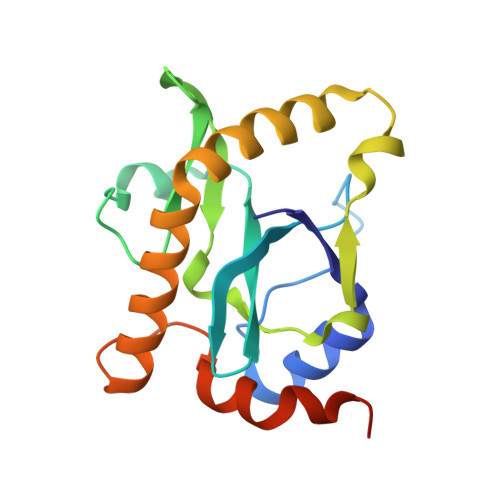A Processed Noncoding RNA Regulates an Altruistic Bacterial Antiviral System.
Blower, T.R., Pei, X.Y., Short, F.L., Fineran, P.C., Humphreys, D.P., Luisi, B.F., Salmond, G.P.C.(2011) Nat Struct Mol Biol 18: 185
- PubMed: 21240270
- DOI: https://doi.org/10.1038/nsmb.1981
- Primary Citation of Related Structures:
2XD0, 2XDB - PubMed Abstract:
The ≥ 10³⁰ bacteriophages on Earth relentlessly drive adaptive coevolution, forcing the generation of protective mechanisms in their bacterial hosts. One such bacterial phage-resistance system, ToxIN, consists of a protein toxin (ToxN) that is inhibited in vivo by a specific RNA antitoxin (ToxI); however, the mechanisms for this toxicity and inhibition have not been defined. Here we present the crystal structure of the ToxN-ToxI complex from Pectobacterium atrosepticum, determined to 2.75-Å resolution. ToxI is a 36-nucleotide noncoding RNA pseudoknot, and three ToxI monomers bind to three ToxN monomers to generate a trimeric ToxN-ToxI complex. Assembly of this complex is mediated entirely through extensive RNA-protein interactions. Furthermore, a 2'-3' cyclic phosphate at the 3' end of ToxI, and catalytic residues, identify ToxN as an endoRNase that processes ToxI from a repetitive precursor but is regulated by its own catalytic product.
- Department of Biochemistry, University of Cambridge, Cambridge, UK.
Organizational Affiliation:



















